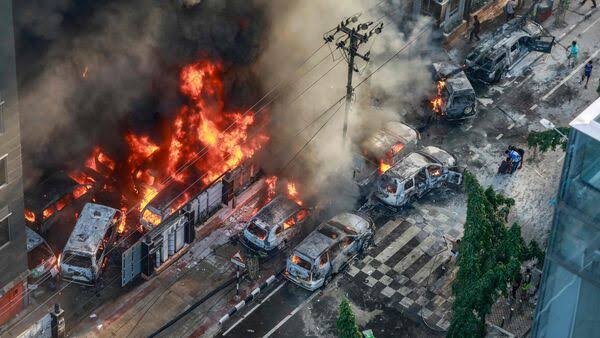
As Bangladesh’s Boils: Intensifying Protests and Political Unrest
For nearly three weeks, Bangladesh has been engulfed in widespread student protests. These protests ignited on July 1, following a High Court ruling that reinstated a controversial policy. This policy reserves nearly one-third of government positions for descendants of those who participated in the 1971 liberation movement. The decision, made in June, increased the total reserved government jobs to 56%, including allocations for women and individuals from underprivileged districts. This has sparked significant unrest, as students see it as a barrier to fair employment opportunities.
The protests have escalated into violent clashes with police and members of the Bangladesh Chhatra League, the student wing of Prime Minister Sheikh Hasina’s ruling Awami League party. These confrontations have resulted in six deaths and hundreds of injuries, underscoring the severity of the situation. Unlike typical grassroots movements led by the economically disadvantaged, these protests are predominantly driven by university students from relatively well-off backgrounds. This reflects the acute desperation for stable employment among educated youth in Bangladesh.
Bangladesh, with 67% of its 170 million population aged 15-64 and more than a quarter aged 15-29, faces a significant challenge in providing sufficient job opportunities for its young workforce. Despite impressive economic growth over the past two decades, averaging 6.25% annually, and significant reductions in poverty rates, substantial inequality persists. The economic benefits have not adequately trickled down to many educated young people, fueling widespread frustration. The job market for university graduates is particularly strained, with many unable to find employment that matches their qualifications.
The protests also underscore broader issues of government shortcomings, inequality, and youth disenchantment with Prime Minister Sheikh Hasina’s administration.
Bangladesh’s economy heavily relies on the readymade garments (RMG) sector and remittances from abroad. This narrow economic base has left the country vulnerable and unable to create diverse employment opportunities. There is a pressing need for Bangladesh to attract more foreign direct investments (FDI) and develop new economic sectors to sustain job creation. Additionally, education reforms are critical to ensure that the workforce is equipped with skills that match the evolving demands of the job market.
The protests also underscore broader issues of government shortcomings, inequality, and youth disenchantment with Prime Minister Sheikh Hasina’s administration. The current situation presents a complex interplay of factors that need to be addressed to prevent further unrest and to ensure that the country can capitalize on its demographic dividend.
Recent developments have seen the government attempting to address some of the protesters’ concerns. However, tensions remain high as students continue to demand more significant changes. The international community is closely watching the situation, given Bangladesh’s strategic importance in South Asia and its potential as a growing economic hub. The outcome of these protests could have lasting implications for the country’s political stability and economic future.
Riya Kothavale is a research fellow at the Sixteenth Council



